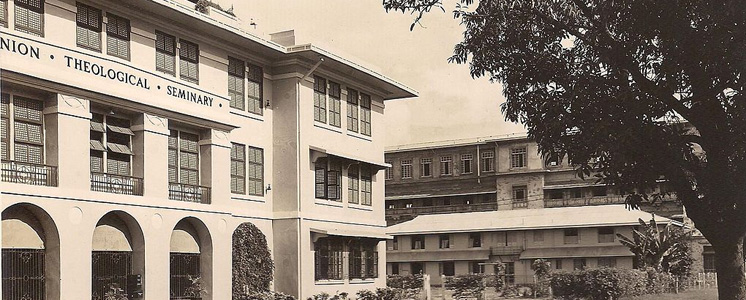Union Theological Seminary, Philippines is an Ecumenical Ministerial Formation Center of the United Methodist Church and the United Church of Christ in the Philippines.
The School of the Prophets: A Brief Historical Sketch
One of the most significant institions contributing to the life of the ecumenical movement in the Philippines is Union Theological Seminary. Its Alumni of thousands have led in the mission to the barrios, evangelization, and establishment of churches in the rural and urban areas, leadership in the ecumenical circles, and services to the filipino people.
The Presbyterians’ Ellinwood Bible School, founded in 1905, and the Methodists’ Florence Nicholson Seminary, established in 1906, merged in 1907 to give birth to Union Theological Seminary. In its first year, Union had 59 students – 47 Methodists, 10 Presbyterians, and 2 United Brethren. The United Brethren Church joined the ecumenical theological endeavor in 1911; the Disciples of Christ in 1916; and the Congregationalists in 1920. The seminary was incorporated in 1920 with the Rev. George William Wright as its first President.
Leadership turned over to Filipinos
The Seminary was led first by dedicated missionaries who put their life’s work in theological education and the evangelization of communities. In 1952 the seminary leadership was turned over to Filipinos. The First Filipino President was Rev. Dr. Benjamin I. Guansing. He was a visionary who, against all odds, led the transfer of UTS to the province of Cavite. Thus began the harvest of more Filipino workers who served in ecumenical institutions, in the episcopacy, in the mission work and community organizing in the barrios, in the advocacy for peace and justice issues in our country and abroad.
Giving Birth to PCU
The Philippine Christian University is one of the children of the seminary, along with Union High School and Union Elementary School in Manila and Dasmariñas, Cavite. These schools were all initiated by the seminary leadership to serve the educational needs of pastors, their families and the surrounding communities. For many years, the seminary and the colleges existed independently and cooperatively under seperate boards.





